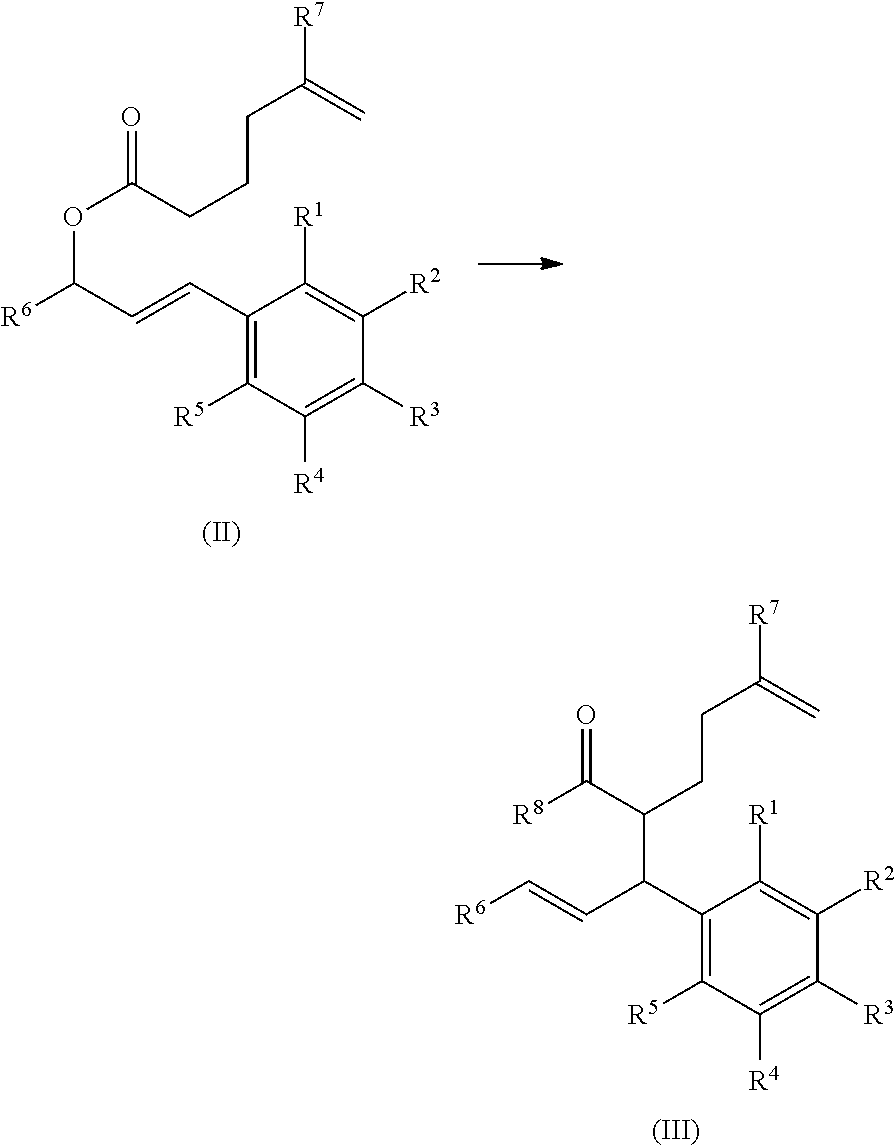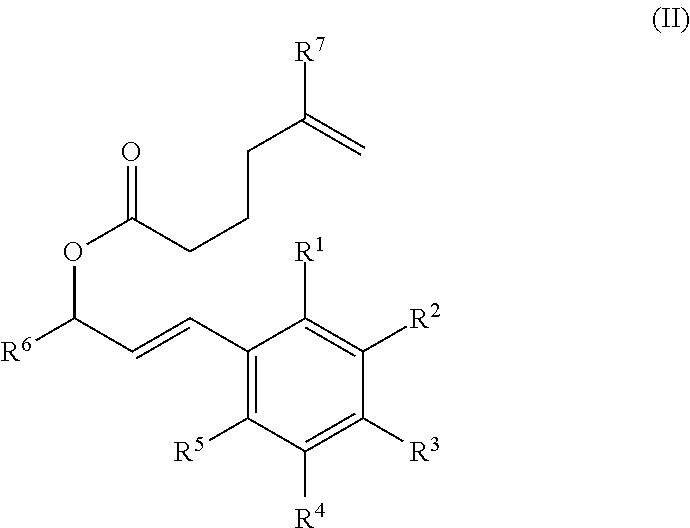Synthesis of cannabinoids
a cannabinoid and analogue technology, applied in the field of cannabinoid synthesis methods, can solve the problems of difficult clinical trials, large majority of other cannabinoid drugs have never been independently evaluated, and it is difficult to isolate and study
- Summary
- Abstract
- Description
- Claims
- Application Information
AI Technical Summary
Benefits of technology
Problems solved by technology
Method used
Image
Examples
example 1
Compound 2
[0140]
[0141]In a 500 mL round bottom flask equipped with a stir bar was added olivetol (10 g, 56 mmol) and K2CO3 (23 g, 0.17 mol) in 150 mL of acetone. Me2SO4 (15.9 mL, 166 mmol) was added dropwise for 5 minutes at room temperature then heated to 80° C. for 12 hours under argon, at which time olivetol was fully consumed (TLC). The reaction mixture was vacuum filtered and rinsed with Et2O (250 mL). The filtrate was washed with 1N HCl (175 mL), brine (100 mL×2), dried over MgSO4, filtered and concentrated to give an orange oil. The crude oil was purified by silica gel column chromatography using Hexanes / EtOAc (9:1) to give compound 2 (11.3 g, 54.2 mmol, 98% yield) as a yellow orange oil. 1H NMR (400 MHz, CDCl3) δ 6.35 (d, J=2.3 Hz, 2 H), 6.30 (t, J=2.3 Hz, 1 H), 3.78 (s, 6 H), 2.55 (t, J=7.4 Hz, 2 H), 1.57-1.66 (m, 2 H), 1.28-1.38 (m, 4 H), 0.90 ppm (t, J=6.6 Hz, 3 H) ppm. 13C NMR (101 MHz, CDCl3) δ160.7, 145.4, 106.4, 97.5, 55.2, 36.3, 31.5, 31.0, 22.5, 14.0 ppm. HRMS m / z: ...
example 2
Compound 3
[0142]
[0143]In a flame dried 500 ml double neck flask equipped with a stir bar was 1,3-dimethoxy-5-pentylbenzene (10 g, 48.0 mmol) and TMEDA (8.69 ml, 57.6 mmol) in 192 ml of anhydrous THF at −78° C. to give a yellow solution. Once cool, sec-butyllithium (41.2 ml, 1.4 M in hexanes, 57.6 mmol) was added dropwise over 10 minutes and the reaction continued to stir at −78° C. for 30 minutes before warming to 0° C. as the mixture continued to stir for an additional 60 minutes. At this time anhydrous DMF (4.46 ml, 57.6 mmol) in 10 ml of anhydrous THF was added to the reaction mixture dropwise over 2 minutes. The reaction continued to stir at 0° C. for 30 minutes before warming to room temperature. Once at room temperature the reaction stirred for an additional 60 minutes before quenching with sat. aq. NH4Cl (75 ml) and DI water (25 ml). The aqueous layer was extracted with EtOAc (3×75 ml) and combined organic layers were washed with brine (75 ml), dried over Na2SO4, filtered and...
example 3
Compound 4
[0144]
[0145]In a 500 ml round bottom flask equipped with a stir bar was 2,6-dimethoxy-4-pentylbenzaldehyde (9.62 g, 40.6 mmol) in 203 ml of water. A solution of acetone (14.9 ml, 203 mmol) and 2.5M NaOH (55.3 ml, 138 mmol) were added quickly and the reaction mixture which was heated to 60° C. for 12 hours. At this time the reaction was complete (TLC, Hex / EtOAc, 4:1, CAM). The reaction mixture was cooled to room temperature and diluted with Et2O (100 ml) and the aqueous layer was extracted with Et2O (3×150 ml). The combined organic layers were washed with 1N HCl (150 ml), brine (75 ml), dried over Na2SO4, filtered and concentrated to give an orange oil. The crude oil was purified by column chromatography using Hexanes / EtOAc (5:1) to give a yellow oil that solidified into a light yellow crystalline solid (10.1 g, 362 mmol, 89% yield). 1H NMR (400 MHz, CDCl3) δ 7.96 (d, J=16.8 Hz, 1 H), 7.12 (d, J=16.4 Hz, 1 H), 6.38 (s, 2 H), 3.87 (s, 6 H), 2.58 (t, J=7.6 Hz, 2H), 2.35 (s, 3...
PUM
 Login to View More
Login to View More Abstract
Description
Claims
Application Information
 Login to View More
Login to View More - R&D
- Intellectual Property
- Life Sciences
- Materials
- Tech Scout
- Unparalleled Data Quality
- Higher Quality Content
- 60% Fewer Hallucinations
Browse by: Latest US Patents, China's latest patents, Technical Efficacy Thesaurus, Application Domain, Technology Topic, Popular Technical Reports.
© 2025 PatSnap. All rights reserved.Legal|Privacy policy|Modern Slavery Act Transparency Statement|Sitemap|About US| Contact US: help@patsnap.com



